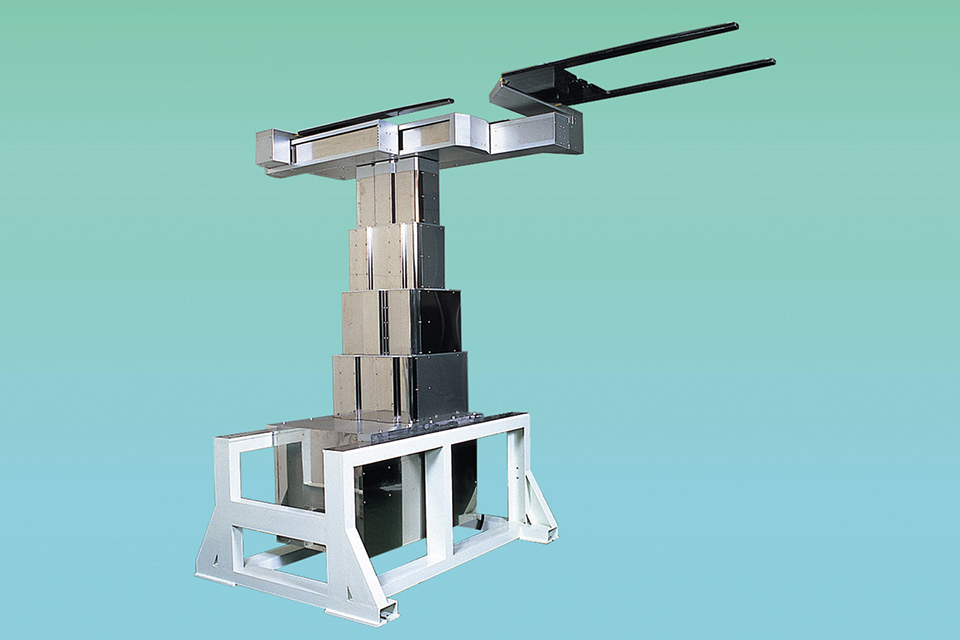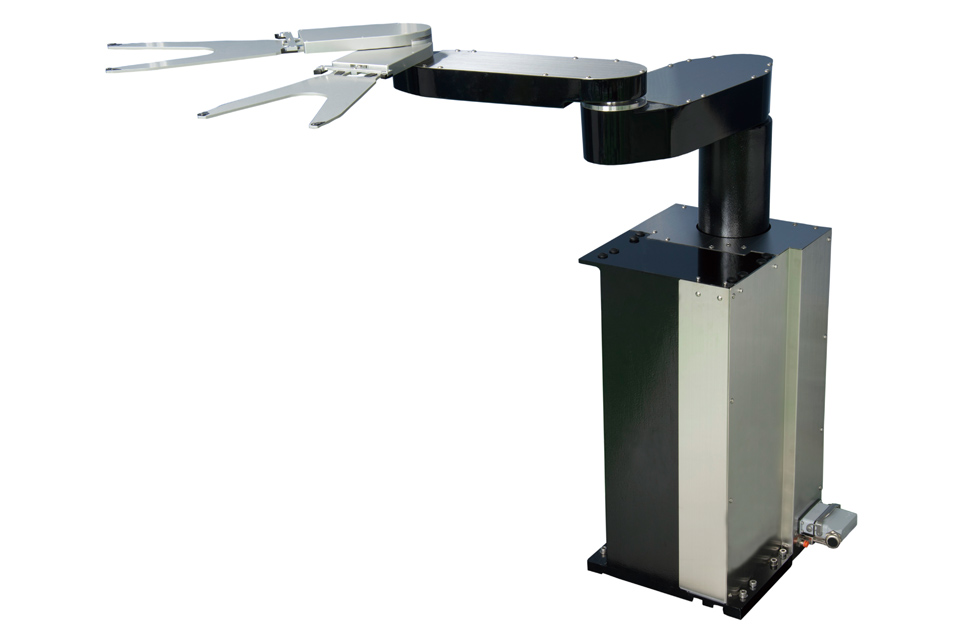Full-Scale Entry into the Cleanroom Robot Market
as Demand for Semiconductors and Liquid Crystals Increased
The 1990s, a period marking the so-called “IT Boom”,
saw the swift acceleration of digitization due to the rapid popularization of information technology devices such as personal computers.
Accordingly, the demand for semiconductors also continued to expand.
As the performance of semiconductors improved and their production volume increased,
the sophistication of their many manufacturing processes was inevitable.
This situation brought focus to cleanroom robots.
Demand for Cleanroom Robots Increases in Advanced Semiconductor Manufacturing Processes
In the 1990s, as the semiconductor and liquid crystal industries showed remarkable growth, semiconductor manufacturing equipment companies were seeking reliable cleanroom robots capable of handling larger wafers and liquid crystal glass. Every company needed a robot with greater maneuverability and a larger working envelope conventional inexpensive SCARA robots or internally manufactured robots could not achieve.
In response to the demands of this era, in 1995, Kawasaki began developing cleanroom robots specialized in handling semiconductor wafers and liquid crystal substrates. Cleanroom robots required completely different technology from the robots used in the automobile manufacturing process, an area Kawasaki had excelled in up until then. However, development went on, leveraging the fundamental technologies of manufacturing cultivated at Kawasaki over the years and using technologies completely different from those used in conventional semiconductor manufacturing. In 1997, Kawasaki succeeded in the productization and launching of two lines: the TS series, vertical telescopic SCARA wafer handling robots with a unique linear motion arm, and the TL series, liquid crystal glass substrate-handling robots.

Preparations for the Full-Scale Production of Cleanroom Robots
After successfully entering into the cleanroom robot market with the TS/TL series robots, Kawasaki gradually increased its market share responding to many customer needs such as high-speed handling, high-precision positioning and automated teaching along the way. In 2000, cleanroom production facility was built in Kawasaki’s own factories to set up a system to manufacture cleanroom robots in a cleaner environment. In 2001, a new KRI branch was opened in San Jose, the center of Silicon Valley on the American West Coast. Kawasaki would strengthen its sales activities of cleanroom robots here, in a region driving the global demand for semiconductors. The semiconductor industry was an area where Kawasaki had to build brand awareness from scratch, so acquiring the trust of the US semiconductor device manufacturers was not an easy task. However, frequent visits to customers, listening and understanding their requests, and providing suggestion upon suggestion, eventually allowed Kawasaki to provide highly integrated comprehensive solutions which included peripheral functions and not simply standalone robots.



